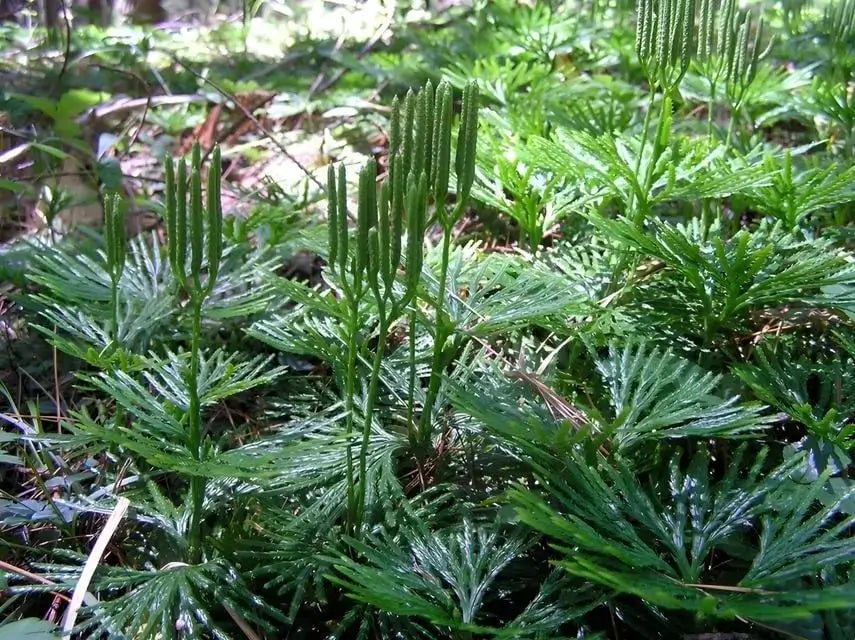



Fan Clubmoss
We sell bare root plants - click here to see what you'll receive
Fan Clubmoss - Diphasiastrum Digitatum
Fan Clubmoss is a low-growing, evergreen plant with densely packed, needle-like leaves that form a distinctive, fan-like appearance and often cover forest floors. It is a unique and versatile plant with various landscaping benefits. Its unusual appearance and adaptability make it a popular choice for enhancing the aesthetics and functionality of outdoor spaces. Unlike its name may suggest, it is not a true moss but a primitive vascular plant belonging to the Lycopodiaceae family.
It is called running cedar or ground pine and looks like a low-growth coniferous plant. However, it is a clubmoss, which is related to ferns. This non-flowering perennial plant was once commonly found across the eastern portion of North America. However, deforestation has dramatically reduced its presence in the wild. Because of its many notable attributes, this plant is an ideal choice to consider adding to your yard.
Fan Clubmoss Looks Like Mini Pine Trees
This fascinating plant typically grows up to 10 inches tall and a foot wide in ideal conditions. Its pine-looking branches are out, creating a stunning design up close. From farther away, the ground appears to be blanketed in green. Often, the plant has a dark green base that fades to a yellowish-green hue toward the tips of its leaves, creating a lovely effect. Some people trim the plants into a topiary design to add an ornamental touch to their yard.
Control Weeds With Fan Clubmoss
This plant is commonly used for ground cover as it proliferates and stays close to the ground. Because the plants can grow densely together, they can block out sunlight from reaching any vegetation attempting to grow underneath it for optimized weed control. This is a highly adaptable plant that can be incorporated in numerous environments. Generally, it will dry out in drought conditions but return with moisture.
It Is An Evergreen Groundcover
At one time, when the plant thrived in its native habitat, this plant was harvested in the wild and used for winter holiday decorations. With the plant growing in your yard, you can easily snip off a few sprigs to dress up your space with a natural touch. The evergreen leaves can also be added to your home decor throughout the rest of the year, such as in a floral vase for a boost of greenery.
Minimize Erosion With It
Fan Clubmoss can absorb considerable water, which is beneficial during heavy rainstorms. It can hold ten times its weight in moisture, offering natural protection in areas prone to erosion.
How to grow it
It prefers partial to full shade and moist but well-drained soil with an added content of organic matter. It grows well in the areas of low temperatures and high humidity.
What are the characteristics of it
It is an herbaceous, perennial plant that spreads by creeping stems and tends to form dense sods. This plant grows vigorously and propagates through rhizomes; it is an ideal plant to use in shaded lawns because it establishes slowly.
Where does it best
It grows well in acidic to neutral and well-draining soils. The plant grows in shaded environments and prefers cool temperatures.
How fast does it grow
It has a slow growth rate of only around 1 to 2 inches a year. Its growth also depends on factors such as moisture, light and quality of the soil.
How to identify it
It is recognized by small scale-like leaves situated spirally along the trailing stems. When young, it commonly makes a bright green ground-hugging mat.
| Planting zone | [4, 5, 6, 7] |
|---|---|
| Height At Maturity | Under 12" |






